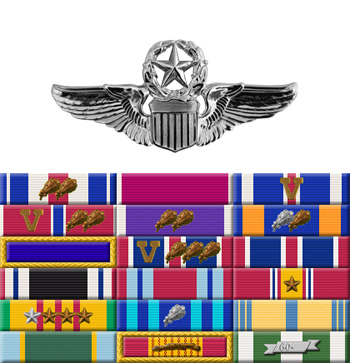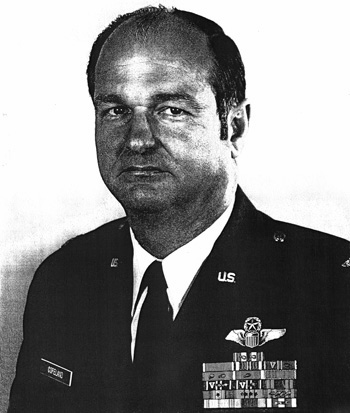
|
H C Copeland |
 |
|||
| Rank, Service | ||||
Colonel O-6, U.S. Air Force |
||||
| Veteran of: | ||||
|
||||
| Tribute: | ||||
HC Copeland was born on February 13, 1931, in Brady, Texas. He was commissioned a 2d Lt in the U.S. Air Force through the Air Force ROTC program on April 30, 1953, and went on active duty beginning July 31, 1953. After completing Intelligence Officer School, Lt Copeland served as an Intelligence Officer until entering Pilot Training in April 1955. He was awarded his pilot wings at Webb AFB, Texas, in April 1956, and then completed F-86 Sabre Combat Crew Training in November 1956. Lt Copeland served as an F-86 pilot with the 354th Fighter Interceptor Squadron at McGhee Tyson Airport, Tennessee, from December 1956 to December 1957, followed by service with the 784th Aircraft Control and Warning Squadron at Snow Mountain AFS, Fort Knox, Kentucky, from December 1957 to May 1959. His next assignment was with the 710th Aircraft Control and Warning Squadron at Tin City, Alaska, from May 1959 to May 1960, and then with the 92nd Support Squadron of the 92nd Bomb Wing at Fairchild AFB, Washington, from June 1960 to September 1964. Maj Copeland next served as an instructor pilot with the 4457th Combat Crew Training Squadron at Davis-Monthan AFB, Arizona, from September 1964 to September 1966. After completing F-105 Thunderchief Combat Crew Training, he served with the 333rd Tactical Fighter Squadron of the 355th Tactical Fighter Wing at Takhli Royal Thai AFB, Thailand, from March 1967 until he was forced to eject over North Vietnam and was taken as a Prisoner of War on July 17, 1967. After spending 2,068 days in captivity, Col Copeland was released during Operation Homecoming on March 14, 1973. He was briefly hospitalized for his injuries at Lackland AFB, Texas, and then served on the staff of Headquarters 12th Air Force at Bergstrom AFB, Texas, from August 1973 until his retirement from the Air Force on August 1, 1979. HC Copeland Flew West on June 12, 2012, and was buried at Lawnhaven Memorial Gardens in San Angelo, Texas. |
||||
|
||||

